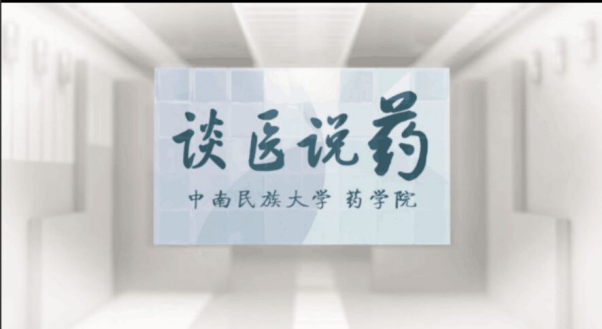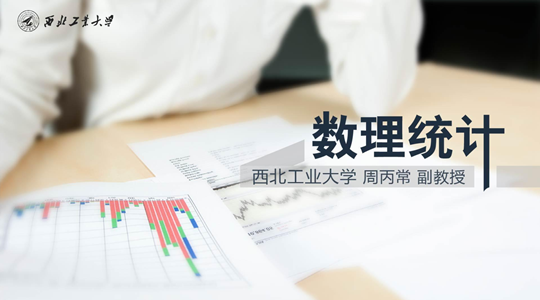
当前课程知识点:Production Engineering > Chapter 2 Inflow Performance Relationship > 2.1 IPR Curve and Well Productivity > 2.1.2 Well Productivity
返回《Production Engineering》慕课在线视频课程列表
返回《Production Engineering》慕课在线视频列表
同学们好 这一节中
我们主要学习一个非常重要的概念
采油指数 另外介绍IPR曲线的重要用途
我们学习油井的流入动态
表达的就是油井向井流动的能力
那么如何量化这个流动能力
我们根据稳态流动的油井产能公式
我们可以知道 在这个公式当中
这一部分对于单相流动来说
它是不随压力而改变的
那么我们将这一部分的参数单独列出来
定义一个变量J这样的话
我们把稳态油井产能的公式
就写为如下的形式了
在这个形式当中 我们说J
我们就称它为采油指数 根据我们选用的单位
采油指数的单位是有所不同的
如果我们选用法定的实用单位
采油指数的单位就是m3/(d·MPa)
那么采油指数它反映的是油层性质 厚度
流体物性
完井条件及泄油面积与产量之间关系的
这样一个综合的指标
根据这个公式我们可以知道
如果是同样的生产压差 采油指数越大
油井的产量就越高 也就是油井的产能就越高
那么如何获得油井的采油指数
当然我们可以直接利用这个公式去计算
但是在这个公式当中
储层的参数
流体的参数以及储层渗流面积的参数
在现场中有时候往往是不可能获取到的
那么我们如何获得采油指数呢
我们可以把这个公式换一个写法
把采油指数换为产量和它对应的生产压差的比值
请大家注意
这个地方要特别强调的是 对应 两个字
也就是说在计算采油指数的时候
一定是产量比上对应的当前这个产量
对应的生产压差获得的比值
所以说采油指数是单位生产压差下的油井产量
那么这个就是我们一个完整的采油指数
或者是采液指数的定义式
那么对于拟稳态流动的油井产能
我们有这样的公式
同样的 我们可以定义采油指数的定义式
我们也可以把油井的产能公式写为如下的形式
当然这个地方所不同的是这个地方的生产压差
地层压力是当前的平均地层压力
希望大家在使用的时候注意这一点
学习了采油指数的概念 下面我们来看一下
单相油井IPR曲线的用途 通过上一节的学习
我们知道利用测试资料
我们得到了一条线性的
表达单相油井流动的IPR曲线
那么这条IPR曲线获得之后 有什么用呢
首先 根据这条曲线
我们可以预测给定流压下的产量
或给定产量对应的流压
也就是说 如果指定一个流压
我们可以根据这条曲线
获取到它所对应的产量是多少
这是我们采用IPR曲线最常用的一个用途
第二 我们可以通过IPR曲线
获得地层压力和最大产液量等参数
如何获得呢
我们来看这条曲线的上端
如果继续向上延伸的话
跟纵轴交点
其实对应的就是产量为0的时候的流压
那么也就是地层压力 同样的
我们可以把这条曲线的下端向下延伸
跟横轴交一个交点
这个就是油井的最大产量
另外我们通过这条曲线的斜率能得到什么呢
我们大家知道这条曲线的斜率是压差比上产量
那么跟刚才我们讲过的采油指数是什么关系呢
注意到 斜率是一个负值
因此我们有这样的结论
采油指数可以是IPR曲线斜率的负倒数
最后通过采油指数的定义式 我们可以知道
在这个定义式当中 如果我们已知了采油指数
同时我们可以获得流体的参数
以及泄油半径等参数的话
我们可以反求出K乘H 也就是说
我们可以通过采油指数
通过单相的IPR曲线获得的采油指数
可以反求地层参数
渗透率 与储层厚度的乘积
最后我们来看一下
一个重要的概念 就是油井的产能
什么是油井的产能呢 我们可以说油井的产能
就是油井的产油能力
或者是油藏向井供油的能力
我们有这样一个问题
一口油井比另一口油井产量高
说明该井的产能高吗 要回答这样一个问题
我们说就需要量化我们油井产能的指标
如何来量化
就是要用到我们刚刚学过的采油指数的概念
也就是 采油指数是比较油井产能高低的指标
如果对于单相油井的IPR曲线而言
IPR曲线斜率的绝对值表达了油井产能的高低
当然了 油井IPR曲线的斜率的绝对值越大
油井产能就越低 以上就是本节的主要内容
同学们再见
-1.1 Main Tasks of Production Engineering
--1.1 Main Tasks of Production Engineering
-1.2 Flow in Production System
--1.2 Flow in Production System
-Problems
--Chapter 1 - Problems
-2.1 IPR Curve and Well Productivity
--2.1.1 Single-Phase Oil Inflow Performance Relationships
-2.2 Vogel's IPR and Applications
--2.2.2 Determination of IPR Curves Using Vogel's Equation
--2.2.3 Skin Factor and Flow Efficiency
--2.2.4 Extension of Vogel's Equation for Non-Complete Wells
--2.2.5 Combination Single-Phase Liquid and Two-Phase Flow
-Problems
--Chapter 2--Problems
-3.1 Two-Phase Flow in Wellbore
--3.1.1 Flow Regimes in Vertical Flow
-3.2 Two-Phase Vertical Flow Pressure Gradient Models
--3.2.1 Two-Phase Pressure Gradient Equations
--3.2.2 Predicting Gas-Liquid Flow Regimes Using the Okiszewski Correlation
--3.2.3 Pressure Gradient Calculation Using the Okiszewski Correlation
-3.3 Vertical Lift Performance
--3.3 Vertical Lift Performance
-Problems
--Chapter 3--Problems
-4.1 Nodal Analysis Approach
--4.1.2 Solution Node at Bottom of Well
--4.1.3 Solution Node at Wellhead
-4.2 Flow through Chokes
--4.2.2 Solution Node at Choke
-Problems
--Chapter 4--Problems
-5.1 Principles of Gas Lift
--5.1.2 Initial Kick-off of Gas Lift
-5.2 Gas Lift Valves and Gas Lift Completions
-5.3 Gas Lift Design
--5.3.1 Gas Lift Design for Specific Production Rate
--5.3.2 Gas Lift Design for Specific Injection Rate
--5.3.3 Kick-off Procedure with Unloading Valves
--5.3.4 Design Depths of Unloading Valves
-Problems
--Chapter 5--Problems
-6.1 Introduction of Surface and Downhole Equipment
-6.2 Operating Principle of Sucker Rod Pumps
-6.3 Pumping Unit Kinematics
--6.3.1 Motion of Polished Rod-Simple Harmonic Motion
--6.3.2 Motion of Polished Rod-Crank and Pitman Motion
-6.4 Polished Rod Load
--6.4.3 Peak Polished Rod Load and Minimum Polished Rod Load
-Problems
--Problems for chapter 6: Sucker Rod pumping I
-6.5 Calculation of Counterbalancing, Torque and Power
--6.5.1 Balance of Pumping Unit
--6.5.2 Counterbalancing Calculation
--6.5.3 Torque and Torque Factor
-6.6 Volumetric Efficiency of Pump
--6.6.2 Gas Effect on Pump Performance
--6.6.3 Measures of Enhancing Pump Volumetric Efficiency
-6.7 Design of Pumping System
--6.7.1 Strength Calculation and Design of Sucker Rod Strings
--6.7.2 Design Procedures of Pumping System
-6.8 Analysis of Sucker Rod Pumping Well Conditions
--6.8.1 Acoustic Surveys and Analysis of Annular Liquid Levels
--6.8.2 Introduction of Dynamometer Card
--6.8.3 Typical Dynamometer Cards
-Problems
--Problems: Chapter 6: Sucker Rod Pumping (II)
-7.1 Water Injection System
--7.1.1 Water Resources and Water Treatment
--7.1.2 Introduction of Water Injection System
-7.2 Injectivity Analysis
--7.2.1 Injectivity and Injectivity Index Curves
-7.3 Injection Tubing String
--7.3 Introduction of Injection Tubing Strings
-7.4 Analysis and Application of Injectivity Index Curves
--7.4.1 Analysis of Injectivity Index Curves
--7.4.2 Injection Choke Deployment
-Problems
--Chapter 7--Problems
-8.0 Introduction
-8.1 The Fracturing of Reservoir Rock
--8.1.1 Basic Rock Mechanics Parameters
--8.1.4 Fracture Initiation Conditions
-Problems
--Chapter 8(I)--Problems
-8.2 Fracturing Fluids
--8.2.2 Fluid-Loss Properties of Fracturing Fluids
--8.2.3 Rheological Properties of Fracturing Fluids
-8.3 Proppants
-8.4 Hydraulic Fracturing Design
--8.4.1 Productivity Index of Hydraulic Fracturing Wells
--8.4.2 Fracture Geometry Models
--8.4.3 Design Procedure for Hydraulic Fracturing
-Problems
--Chapter 8(II)--Problems
-9.0 Introduction
-9.1 Carbonate Acidizing
--9.1.1 Mechanism of Carbonate Acidizing
--9.1.2 Effect Factors of Reaction Rate
--9.1.4 Effective Distance of Live Acid
-9.2 Sandstone Acidizing
--9.2.1 Mechanism of Sandstone Acidizing
--9.2.2 Mud Acid Treatment Design
-9.3 Acidizing Treatment Technologies
--9.3.2 Acidizing Treatment Operations
-Problems
--Chapter 9--Problems
-Final Exam



